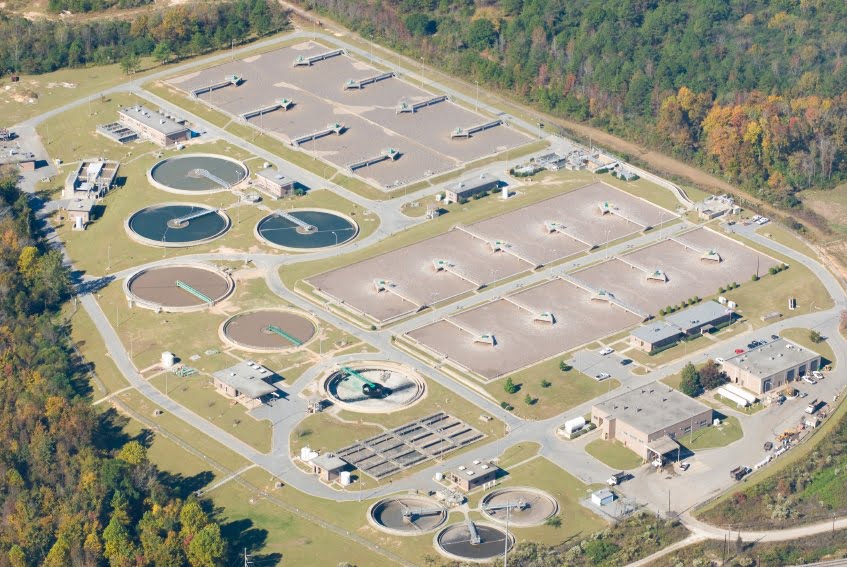5 Things to Know about Enclosure Air Conditioners for Water Treatment
 The treatment of water, whether for human consumption or purifying wastewater, involves the use of various processes to clean and disinfect the water. A number of chemicals are used along with processes such as biological treatment, aeration, coagulation and settlement.
The treatment of water, whether for human consumption or purifying wastewater, involves the use of various processes to clean and disinfect the water. A number of chemicals are used along with processes such as biological treatment, aeration, coagulation and settlement.
In both processes, water purification and wastewater treatment, the water vapor that’s constantly present along with the atmospheric emissions of corrosive chemical vapors play havoc with electrical equipment, and special measures need to be taken to protect such equipment.
Water Treatment Challenges
Water treatment plants are largely outdoors, although certain processes may be conducted under cover or in buildings. These plants handle enormous volumes of water, and they are often located close to rivers and waterways to allow natural gravity to assist with water distribution. Specific issues include:
- Water vapor: The processing of large volumes of water inevitably means that equipment is likely to be splashed or even sprayed. Outdoor plants are subject to prevailing weather conditions, including rain, snow and ice. Humidity levels are high, especially indoors.
- Corrosive vapors from wastewater: As a consequence of chemical and biological processes that take place in sewers, toxic and corrosive hydrogen sulfide is released from wastewater. Additionally, other corrosive effluents from industrial plants may be present.
- Corrosive chemicals used in water processing: Various chemicals are used to disinfect water, including chlorine, hydrogen peroxide, ozone, calcium nitrate and sodium bisulphate. Many of these chemical are highly corrosive towards carbon steel and aluminum.
The consequence of the above issues is that the environment in all water treatment plants is aggressively corrosive, and unprotected electrical equipment may rapidly deteriorate.
Measures Taken To Protect Enclosure Air Conditioners
It is clear that carbon steel enclosures, even those that are epoxy coated, are not suitable for water treatment plants, and equipment needs to be protected against the ingress of water and corrosive vapor. Here are five ways to protect wastewater treatment enclosure air conditioners:
- Corrosion resistant materials: The enclosure and all steel surfaces exposed to corrosion should be manufactured from stainless steel. Depending upon the application, either type 304 or 316 can be specified, and the entire enclosure is highly polished to a number 4 finish. All units are built on a rigid chassis with a seam-welded shroud, and the top is sloped to prevent the accumulation of water.
- NEMA Type 4X sealing: Enclosure air conditioners are manufactured to the NEMA Type 4X enclosure rating, which is weatherproof and resistant against direct water spray. The enclosures are tightly sealed to prevent the entry of corrosive vapors, thus ensuring that no vapors, moisture and chemicals enter the electrical enclosure.
- Corrosion protection: The enclosure air conditioner housing should have two separate compartments: the evaporator coil, within a sealed portion, that directly communicates with the electrical enclosure, and the condenser coil in a second compartment, which must be ventilated to allow the refrigerant to condense. Condenser and evaporator coils are manufactured from copper, and to avoid corrosion, these coils are electrostatically epoxy coated. All other tubing is epoxy painted, and a corrosion-resistant 45% silver solder is used to braze all joints.
- Humidity control: The air humidity in a water treatment plant is consistently high, particularly inside buildings. Despite enclosure sealing, moisture-laden air can find its way into enclosures, especially during maintenance. If not removed, high humidity accelerates corrosion of electrical equipment. Internal humidity can be controlled in two ways. First, moisture is naturally removed as the air passes over the air conditioner evaporator coil. Second, look for optional enclosure heaters that ensure the internal temperature of the electrical enclosure is always above the dew point so no condensation can occur inside the enclosure.
- Condensate removal: A condensate evaporation system evaporates the condensate and discharges it to the ambient air. The best system uses the hot gas from the compressor to evaporate the water. These actions protect equipment from excessive moisture while contributing to power efficiency of the air conditioner.
Enclosure air conditioners for wastewater treatment plants are built to withstand the harsh environment that is found in both water treatment and wastewater treatment plants. Additionally, these units are suitable for use in a wide range of corrosive environments as found in chemical plants and marine locations.
To find out more about Thermal Edge’s corrosion-resistant enclosure air conditioners, speak to our Technical Services Department.

